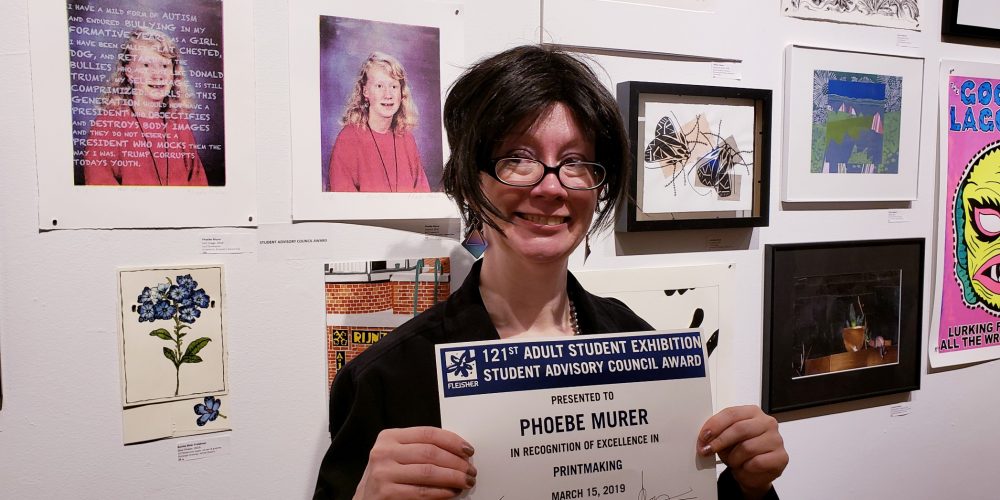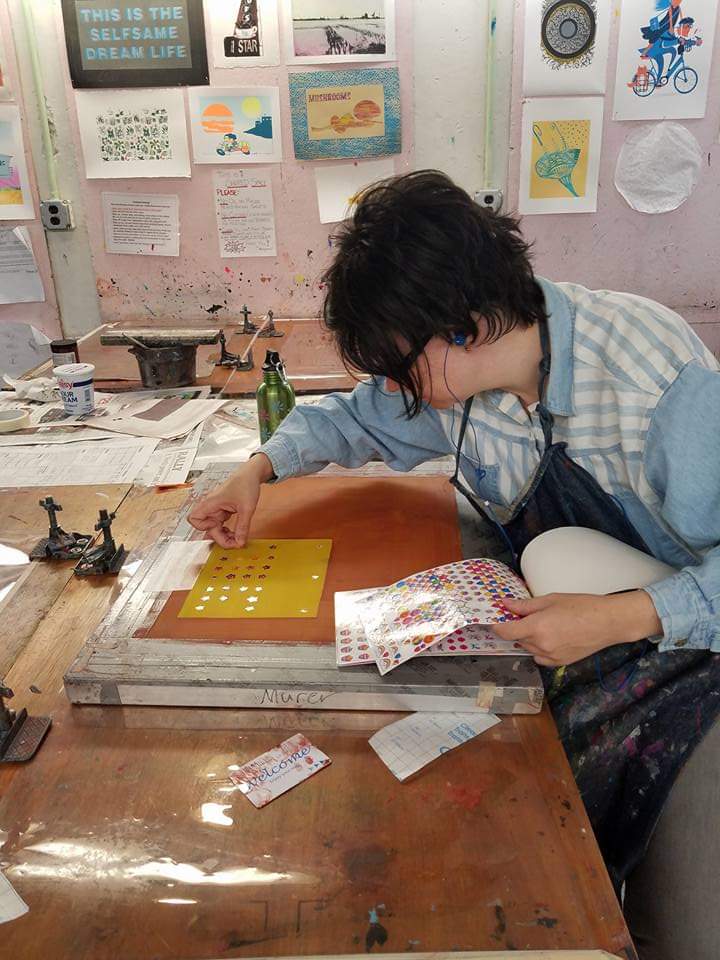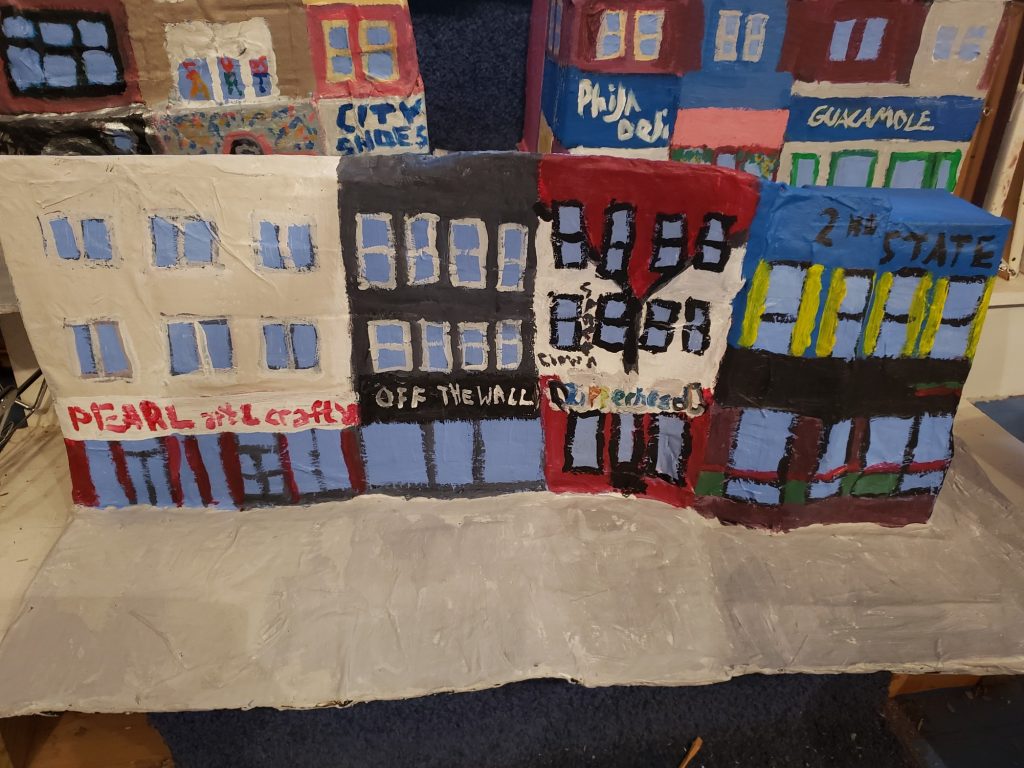
Reliving South Street’s Heyday Through Art
As a preteen growing up in Philadelphia in the late 80s Phoebe Murer got involved with Prints in Progress through artist Sam Maitin, Murer’s neighbor and a former Fleisher board member. At the time, the program held sessions in Fleisher’s old basement screenprint studio, and some of Murer’s earliest memories as an artist are of the space and bringing junk food as a snack.
Her involvement in Prints in Progress has spurred a near lifelong affiliation with Fleisher, and her life as an artist is as intertwined with Fleisher as it could possibly be.
While she was younger and throughout her education at PAFA, from which she holds a certificate of fine arts, Murer expressed her vision through painting.
“I was using a lot of toxic materials,” she says, unhappy at the idea.
When she returned to Fleisher as an adult, she enrolled in a screenprint class and was thrilled to discover the medium’s materials are largely nontoxic. More than that, she started learning how to create landscapes with silkscreen, something she didn’t realize was possible. Murer says screenprint classes were not available during her time at PAFA, so it felt as though was like a whole new form of artmaking was made available to her.
Murer also says Fleisher has also awakened an interest in teaching art, specifically to young artists. Today, Murer is a teacher at Timothy School in Berwyn, where she introduces visual art to autistic children who attend the school.

When Murer first started coming to Fleisher as a child, she remembers struggling to complete her classes because, as a person on the spectrum, she required more attention than she could be provided at the time.
“Watching my teachers at Fleisher gave me confidence to teach at Timothy,” Murer says, noting that she’s taken many classes at Fleisher where faculty members have helped her further develop the teaching styles she has adopted.
She credits Fleisher for much of her development as an artist as well. Fleisher, she says, helped her find a place in the art world and a job in a field she’s always loved. In addition, she says Fleisher’s inclusive environment has help her navigate social interactions with others, be it friend, teacher, student, or colleague.
In the last decade Murer has had 10 solo exhibitions, the most recent of which is a mixed-media exploration of South Street in the 1990s. At Da Vinci Alliance through November 24, her sculptures remember the famed Philadelphia street, then known for independent destinations like Zipperhead and Book Trader, before gentrification and corporations radically altered its character. Murer had a similar exhibition at Da Vinci in 2018 that focused on South Street a decade prior.

“I remember in the 80s there weren’t many corporations,” Murer says. “There were more mom and pop shops. It was more of a punk and hippie place. More corporations came in the 90s, like Tower Records.”
For her work in both exhibitions, Murer relied on photo references of storefronts and shops she found online to supplement her own memory. She also says she would take walks on South Street and photograph it, in an effort to jog her memories of the 90s.
Despite the homages to Philadelphia in her work, Murer wrote in a personal blog post that she wrote she had plans on leaving her hometown. But, she says, Fleisher’s presence makes her want to stay.
“Before I went to Fleisher I couldn’t find jobs in the art field. I wasn’t involved with the art world. I couldn’t get into an art show,” she says. “I didn’t even know about Da Vinci Art Alliance, and then they showed me.”
This story was written by Kailee Walsh, who is interning with Fleisher’s communications department this fall. Kailee is a senior journalism student at The College of New Jersey. She thinks Philadelphia is the center of the universe and loves to watch movies.


To get updates on events, exhibitions & class information:
"*" indicates required fields